-
Posts
2,801 -
Joined
-
Last visited
-
Days Won
11
Content Type
Profiles
Forums
Blogs
Gallery
Downloads
Events
Posts posted by akd
-
-
I think from a UI standpoint, simpler way to switch between setting gun and torpedo fire control for individual ships or for all ships in a group would be most appreciated. I guess I got used to clicking through and changing it for individual ships, but this is actually very annoying. However, a per ship option is needed in some circumstances.
-
 1
1
-
-
-
Direct detonation and local damage from hits on torpedo launchers needs to be modeled, rather than just adding to chance of post-penetration ammo detonation.
-
 3
3
-
-
Off the top of my head:
1. Spotting and targeting should be relative, but there should also be less tower-dependent differences in visibility, at least for broad classes of ships.
2. Better representation of differences and evolution in armor schemes.
3. Accuracy should update after shots arrive at target (with additional time for observation and adjustment), not when guns fire.
4. Relative range and bearing rates should be a more dominant factor in accuracy; absolute target size and speed less.
5. Less abstract treatment of smoke and radar.
6. More freedom for placement of towers, barbettes and funnels, balanced by effects of engine placement, citadel length and topweight factor.
7. I think some consideration needs to be given to making hulls and towers more generic and less deterministic. For example, with the new Italian heavy cruiser hull, 6 empty gun positions are included along the side of the hull by default. Not placing guns centered in these positions looks strange, so you are funneled into a much more limited set of choices for configurations. Same with new US BB hull and several new towers. Perhaps instead of showing these elements in 3D by default, there could instead be mounting points that cause some elements to only appear when a gun / torpedo launcher is mounted there? The same might be considered for casemate positions, although these appear less strange when empty.
-
 21
21
-
-
You can see that this is the case in the target armor diagram with penetration probability that appears above targeting cursor once the ship is ID'd (note that the thinner line along the top of the structure is showing deck armor, not some sort of thinner extension to the belt armor on the upper hull). The only thing I'm not sure on is if there is a hit location for ammo behind the belt and deck extensions. I suspect there is simply a chance of ammo detonation following penetration regardless of where the hit occurs.
-
1 hour ago, arkhangelsk said:
As an aside, I'm not sure where the multiple hundreds of hits on 定遠 and 鎮遠 came from . Lai's Chinese Battleship vs Japanese cruiser (Osprey) figures 定遠 ate 159 hits, while Piotr Olender's Sino-Japanese Naval War figures it ate about 90-100. As for 鎮遠, Lai repeats the 220 times figure in his maintext, but his table estimates about 80 hits which is about the same as Olender's 80-100.
Yes, there are multiple numbers floating around, but it remains in the end a large number of non-fatal hits.
-
5 hours ago, ThatZenoGuy said:
Because 'aim manually and click the fire trigger' is the same as WW1-2 fire control directors that, once exploded (and usually in unarmored areas) significantly decrease accuracy?
Well, it would be as capable as fighting as the Zhenyuan, which is to say less capable but not dead. Taking out director did not disable the battery. Even after you got through all the redundancies (and there were a lot), you’d eventually be left with turrets under local control, just like Zhenyuan.
-
You forget that HMS DREADNOUGHT rammed and sunk a u-boat, so it seems that tangling with submarines is already in the name.

-
2 hours ago, WelshZeCorgi said:
Maybe there should be several short "survive the -destroyers, torpedo boats and cruisers" 5 minute missions
Essentially these missions would allow players to play with, focus on and wrap their head around the other aspect of ship warfare like speed, turning radius, armor, to dodge torpedoes, tank/bounce shells and ultimately learn about what helps ship survive under certain circumstances.
Though I can see how you could argue that all missions are sort of survival missions but I'd just put it out there to see if it would make sense to focus on the defenses of ships.
Frustration with the Destroyers v. Torpedo Boats mission seems to have driven some of the feedback regarding secondaries. Probably would have been good to step back and assess the objectives in that mission and realize they were totally artificial, and thus in need of artificial mechanics to accomplish. Destroyers should only need to mission kill the TBs to succeed in the mission of protecting the capital ship. This was quite attainable even before the most recent build. Hunting TBs to destruction should be a mission for independent destroyers that can utilize ToD, weather and geography to maximize their chance of achieving kill-kills.
-
My impression is that adding additional deck armor was easier than altering vertical armor.
-
15 hours ago, ThatZenoGuy said:
Small guns could (and should) annihilate the bow and stern of AON ships (predictably they have 'nothing' there), and the superstructure.
Doesn't matter how big your ship is, if its entire upper decks are ablaze and missing.The Chinese ironclad Dingyuan was holed 464 times at the Battle of the Yalu River, mostly by 2-6" QF guns, yet was still considered capable of fighting. Likewise her sister ship Zhenyuan took 220 hits and was similarly still capable of fighting. Not an all or nothing armor scheme, but much of her superstructure was unarmored.
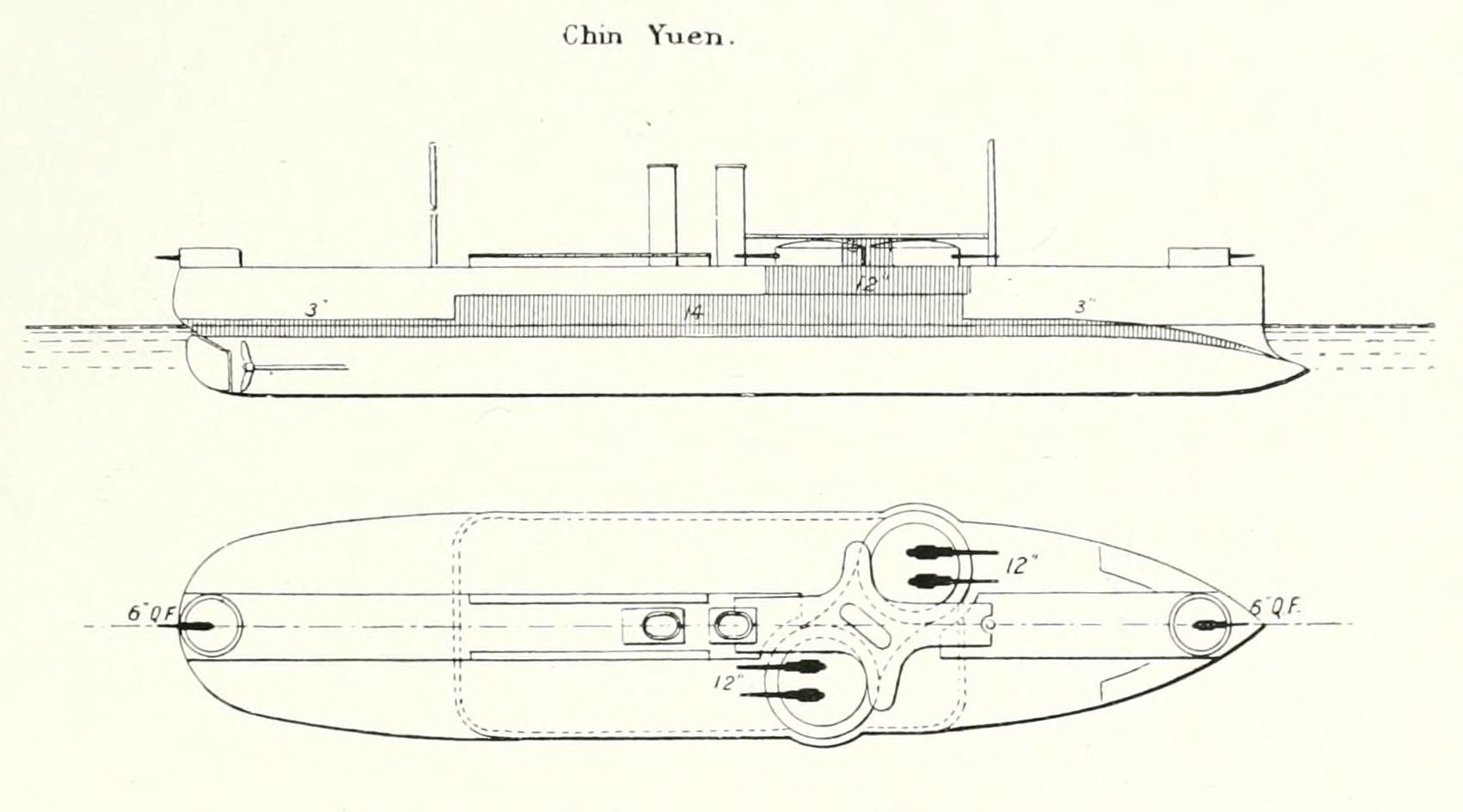
At the same time, the Japanese large protected cruiser Matsushima suffered some 100 casualties and was knocked out off action by a single 12-inch shell.
-
 1
1
-
-
4 hours ago, arkhangelsk said:
It is more realistic to separate them, but you do have to balance this against the complexity of pre-planning that this forces onto the players. Imagine this screen popping up:
Naval Battle: Close to your Home Port
Available forces: 4 battleships, 8 heavy cruisers, 12 light cruisers, 36 destroyers.
Accept / Decline fight.You click Accept and instead of warping into the battle, you are stalled by a screen:
Please select the loadout you want for your battleships.
And you have to select (or confirm) ammo for 60 ships before you can flip into combat...
Immediately before battle is not when ammo allocations would be made. It would either be a per ship design choice (allowing for a simple "refit" to change allocation) or a doctrine choice that would apply to all ships of a type / role at the time.
-
 5
5
-
-
6 hours ago, disc said:
Off the top of my head, I believe there was some German WWI interest in mixing wet-heater and compressed air "cold" torpedoes, as the latter would require no warmup time. I will have to check if this was done.
Brits pursued this for a time:
QuoteIn 1917, in connection with the proposed S class design, Commodore (T) Tyrwhitt therefore asked for a pair of 18in tubes, one on each side, firing short-range cold torpedoes controlled from the forebridge, specifically to deal with enemy destroyers or submarines. As approved by the Board in April 1917, they were installed under the new ships’ bridges, so that an officer on the bridge could instinctively hit a nearby target athwartships. The tubes were stowed inboard, swinging out ninety degrees to fire.
Some Harwich and Dover Patrol ships were each equipped with two 14in tubes for snap shots.
From Friedman’s British Destroyers.
This is of course at the time when 21in torpedos were standard on new destroyers.
-
 1
1
-
-
Propellants as a per ship design choice makes very little sense to me. My general impression is that as new and improved propellants were developed, they tended to be used generally, not tailored to specific ships or missions. The same could perhaps be said about explosive filler, but at least that entails a lot more trade-offs that make for meaningful design choices, as does the design of the shell and fuzing itself. But combining propellants and explosive fillers into a single choice is completely nonsensical, as these were attempting to accomplish very different goals.
-
 1
1
-
-
12 hours ago, Hangar18 said:
It makes no mention of what type of steel is used. it would be whatever the USN used in their testing, im assuming the game is just modeling the best steel of the period. I think part of the issue is that the shell weights are extremely off. by about double by default. This is combined with a muzzle velocity already above what it should be by a few hundred M/s
So I could be wrong in the assumption that "krupp 4" is whatever the USN used for testing. But either way something is very very off.Indeed, very off.
vsKCcomparedtogame5_Mk5vs_118.png.706d46a6f26e3643f6ada14bd97fd641.png)
-
1 hour ago, Hangar18 said:
The pen shown in port is for Iron. if you adjust it to krupp 4 then its pretty close to historical.
Yes, I'm aware. Again, what is your data that shows penetration of Krupp steel that high?
-
If strategic and budgetary limits are placed on the players, both AI and human, I don't see why there wouldn't be natural constraints or at least forced trade-offs.
-
 2
2
-
-
What data are you using? Based on any comparison I can find, penetration is significantly overstated, and totally absurd when compared to the maximum ranges listed.
-
One thing that would help would be to get the delta between big gun and QF gun reload times in battle conditions during the early era closer to correct rather than artificially boosting accuracy. That would greatly increase their relative value, and even lead to natural accuracy advantages in certain situations.
But forcing the “hail of fire” doctrine to succeed under a broad set of circumstances simply because it drove some historical design decisions will just lead to a distorted model.
-
 1
1
-
-
I do not believe "HE" in game is true HE shell, but rather something more akin to common shell or semi-AP.
Such as:
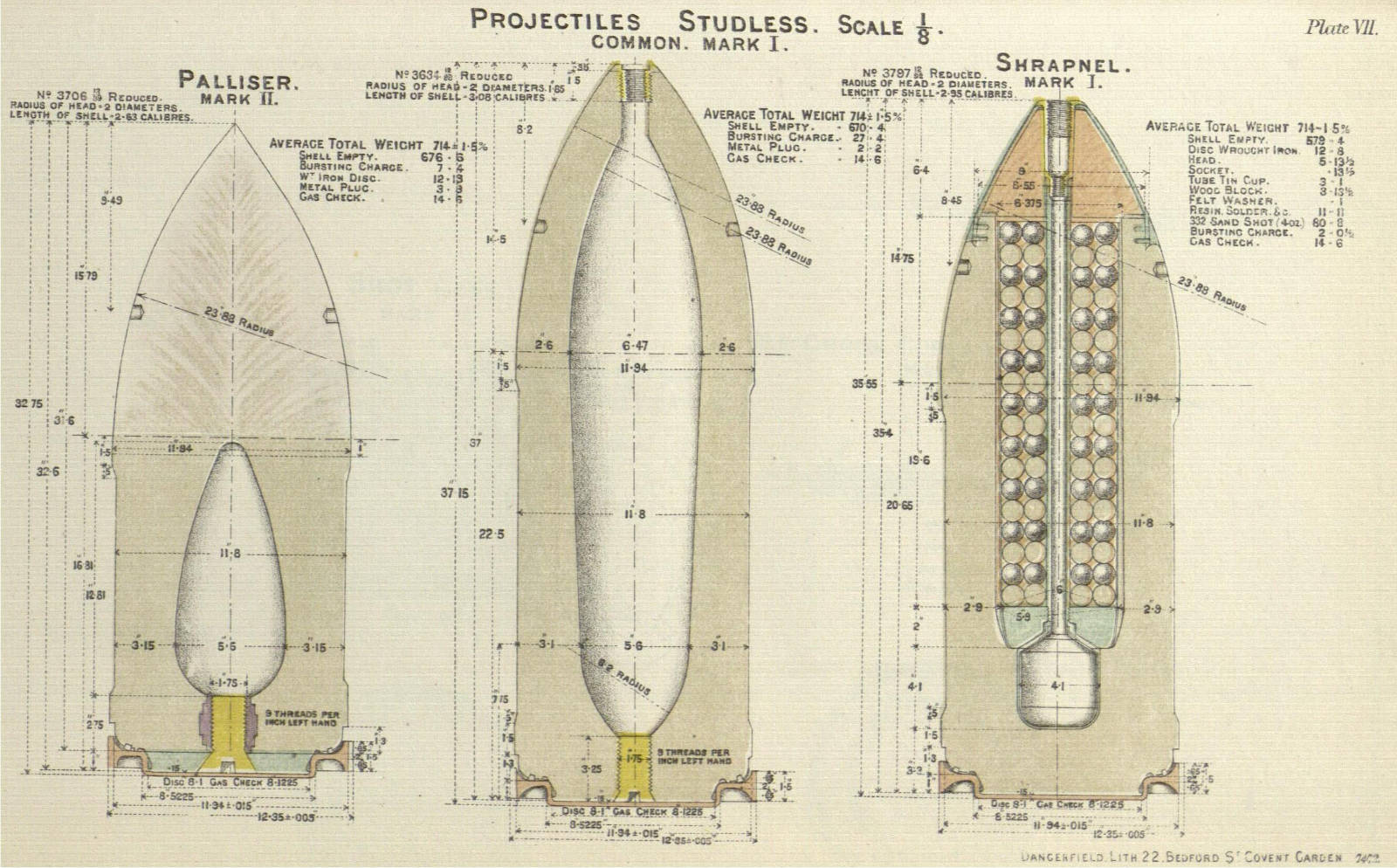


Rather than:

-
 1
1
-
-
20 minutes ago, Hangar18 said:
so lets look at this another way. visually, through smoke you cannot tell what the proper range is. with radar, thats all but certain
Yes, but with early radar there would be significant range error and even more significant bearing error, and no ability to observe fall of shot. So "seeing" with radar is not the same as visual observation. Later radar designed for fire control would improve on that, but with the caveats above.
For finding the enemy's rough location, the advantage is almost absolute (perhaps debatable with early radar in the most ideal visual conditions), but for shooting at the enemy it is much more conditional and interrelated with visual conditions.
-
Just now, Hangar18 said:
correct. when you are higher, your LOS becomes further.
Yes, but radar does not visually see and ID the target. I disagree, however, that it is necessarily higher than the highest visual spotting position. Probably often true, but not always. Regardless, that is not the point. Seeing with radar in this era was not the same as visually observing a target.
-
3 minutes ago, Hangar18 said:
radar masts are generally higher than anything else. for example on the iowa theyre mounted about 20' higher, which is a pretty big deal.
When we speak of LOS here, I think we are talking about literal line of visual sight.
-
21 minutes ago, RedParadize said:
On the subject of LOS, it seem to be global and not per ship. There is no penalty from 3rd party spotter. I think there should be a malus for this, tied to communication technology. About communication technology, I think it should affect player ability to give order and receive information. Atm its like player is on every ship.
Yes, but I think simple penalty is insufficient. That still leaves you with the possibility of a single destroyer conducting fire control for an entire fleet. I think the rule should be simpler: either the ship itself or divisional ships sailing within XXXm must be able to visually see the target to fire on it with the following limitations:
- Before the advent of complex fire control computing and dedicated fire control radio frequencies, ships firing on same target should suffer a significant "concentration fire" penalty. (And this should be per ship selectable technology, not unlocked and applied to all ships subsequently built.)
- Radar II (assumed to be second generation search + fire control radar, not first-gen search only) can allow ship (or division with above restrictions) to fire on an unseen target, but only within 18,000m (as noted above this was broadly the range for large caliber splashes to be spotted on radar, allowing for adjustments). Possibly blind fire beyond that range might be allowed with a significant penalty for not being able to spot and adjust.
Radar should not give any information on targets that are out of visual sight except possibly a broad classification such as small, medium or large and course + speed.





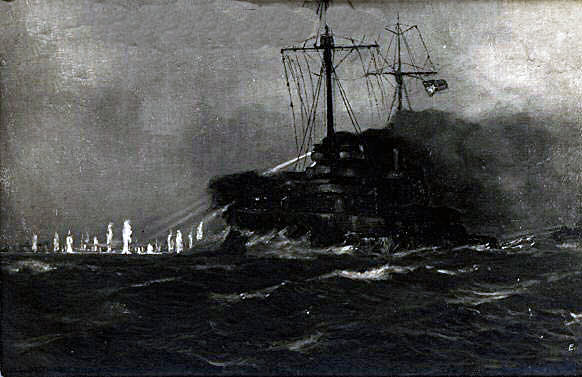
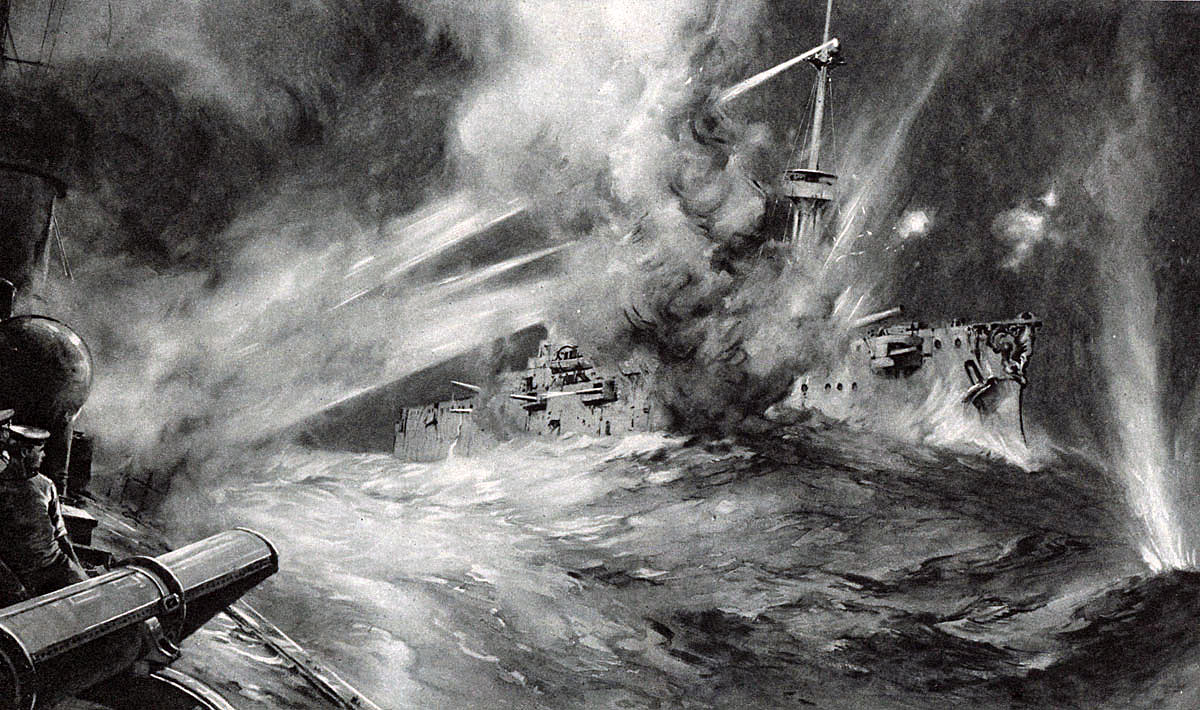
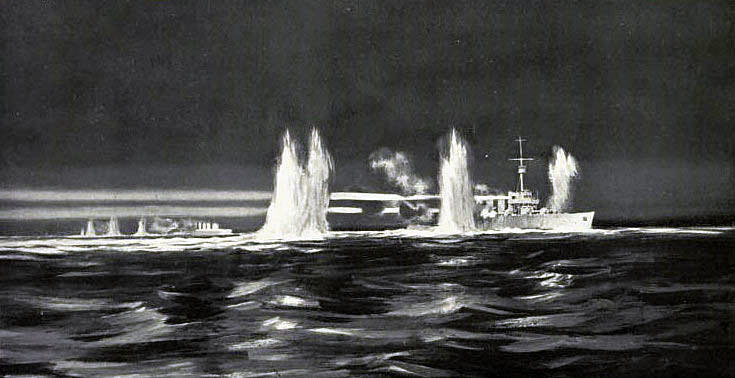

vsKCcomparedtogame5_Mk5vs_118.png.706d46a6f26e3643f6ada14bd97fd641.png)
Armor mechanics: How I would like it to work
in General Discussions
Posted
And note that above only describes post-Dreadnought / Krupp armor. Earlier schemes, in particular protected cruiser scheme and early central citadel ironclad scheme, made a completely different set of compromises that had huge effects on ship survivability, and in turn drove armament development.